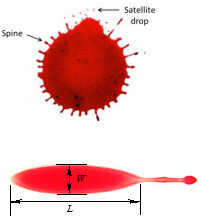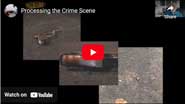|
View in browser: https://www.crime-scene-investigator.net/newsletter/0325.html
|
|||
|
MARCH 2025 | |||
| |||
|
Featured Video Presentation
|
|||
|
This presentation on processing the crime scene includes where to start; prioritizing the collection of evidence; crime scene search methods; collection and submitting evidence; and crime scene reconstruction. |
|||
|
This Month's Featured Resource on the Crime Scene Investigator Network Website | |||

The Biological Evidence Preservation Handbook: Technical Working Group on Biological Evidence Preservation The Biological Evidence Preservation Handbook offers guidance for individuals involved in the collection, examination, tracking, packaging, storing, and disposition of biological evidence. This may include crime scene technicians, law enforcement officers, healthcare professionals, forensic scientists, forensic laboratory managers, evidence supervisors, property managers, storage facility personnel, lawyers, testifying experts, court staff members, and anyone else who may come in contact with biological evidence. While many of the recommendations relate to the physical storage, preservation, and tracking of evidence at the storage facility, this handbook also covers the transfer of the material between the storage facility and other locations and discusses how the evidence should be handled at these other locations. This report is divided into five main sections that detail issues and make recommendations related to biological evidence storage, tracking, preservation, and disposition. A glossary, which provides standard definitions of the technical terms used in this report, follows these sections. |
New CSI and Forensic Job Announcements
|
||
|
The most comprehensive listing of Crime Scene Investigation and Forensic To be notified of job openings as they are posted, follow us on Twitter: Job Posting Alerts |
|||
|
Crime Scene Investigator
St. Louis County Police Department, St. Louis, Missouri, USA Final Filing Date: March 28, 2025 Responsible for identifying, processing, documenting, collecting, and preserving physical evidence from crime scenes. Prepares written reports and provides expert testimony when requested. <View complete job listing> |
|||
|
Crime Scene Technician I
Guilford County Sheriff's Department, Greensboro, North Carolina, USA Final Filing Date: March 23, 2025 Respond to crime scenes, document, photograph and process for all types of evidence; including fingerprints, footwear/tire tread impressions, DNA, trace evidence, gunshot residue, and other types of physical evidence. <View complete job listing> |
|||
|
Crime Scene Technician I/II
Kern County Sheriff, Bakersfield, California, USA Final Filing Date: March 28, 2025 Performs a variety of duties involving the collection, preservation and recording of physical evidence at crime scenes and autopsies. <View complete job listing> |
|||
|
Forensic Services Supervisor
Gilbert Police Department, Gilbert, Arizona, USA Final Filing Date: March 31, 2025 Oversees the Crime Scene Specialists that are responsible for the examination and investigation of crime scenes for identification, collection, preservation, and evaluation of evidence. Directly supervise Forensic Scientists who perform advanced forensic examinations in the laboratory. <View complete job listing> |
|||
 |
|||
|
Property and Evidence Custodian
Madison Police Department, Madison, Alabama, USA Final Filing Date: March 31, 2025 Receiving, recording, controlling, dispersing and disposal of property and evidence. Responsibility for maintaining the integrity of evidence, which may be used in a court of law. May be called to present testimony regarding the integrity of the chain of evidence. <View complete job listing> |
|||
|
Forensic Scientist - Latent Fingerprint
Albuquerque Police Department, Albuquerque, New Mexico, USA Final Filing Date: March 24, 2025 Identify, examine, analyze, evaluate and interpret evidence in the investigation of crimes; use forensic science in the analysis of evidence in order to reach scientific conclusions in the area of Latent Fingerprints; <View complete job listing> |
|||
|
Forensic Scientist - Firearms & Toolmarks
Virginia Department of Forensic Science, Manassas, Virginia, USA Final Filing Date: March 27 2025 Examines, compares, and evaluates firearms, ammunition components, clothing, tools and objects bearing toolmarks. Responsibilities include the documentation of evidence, interpreting results, preparing reports of findings, preparing court exhibits and testifying in court as an expert witness. <View complete job listing> |
|||
|
Medicolegal Death Investigator
Pierce County Medical Examiner, Tacoma, Washington, USA Final Filing Date: March 20, 2025 Examine death scenes and dead bodies and confer with appropriate parties to gather information about deaths and ascertain circumstances, medical history, and probable cause of death. Take photographs, prepare diagrams, <View complete job listing> |
|||
|
Search for more job listings in Crime Scene Investigations and Forensics To be notified of job openings as they are posted, follow us on Twitter: Job Posting Alerts |
|||
|
Other Resources on the Crime Scene Investigator Network Website
|
|||
|
Not Subscribed to this Newsletter?
|
|||
|
If you are not subscribed to this newsletter, you may subscribe our website by clicking here: SUBSCRIBE. |
|||
|
To Unsubscribe
|
|||
|
To unsubscribe from future e-mail alerts, please click here: UNSUBSCRIBE Copyright ©2025 Crime Scene Investigator Network Crime Scene Investigator Network |




